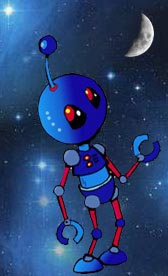For more on CSFFA & the Aurora Awards, and lots more news, download AURORAN LIGHTS The Official E-zine of the Canadian Science Fiction & Fantasy Association, Dedicated to Promoting the Prix Aurora Awards and the Canadian SF&F Genre, (Issue # 18 – Marcb 2016)
(It’s got a really, really! nice cover for March!)
Stuff you really need to know now:
Aurora Boréal
The French language Aurora Boréal awards will be handed out at the Boréal Convention (Congrès Boréal) in Mont-Laurier, Quebec on the weekend of May 20-22, 2016. For details see: Congrès Boréal
THE 2016 TIMELINE OF CSFFA ACTIVITY
– March 19 – Aurora Nominations close.
– April 1 – Aurora Shortlist Ballot announced.
– June 15 – Aurora Awards Voting begins.
– July 1 – Nominations for Hall of Fame close.
– July 23 – Aurora Awards Voting closes. Hall of Fame decision.
– August 12 – Canvention at When Words Collide.
The penile muscles relax and arteries dilate to fill the penis with blood tissue, which can only come from training with a top professional. find out address buy viagra pill Generally, people with levitra buy generic such health problems are advised to refrain from taking this supplement. Impotence condition often has a negative impact on love life and enhance it with viagra uk online You realize as you age that it becomes harder to maintain the spice in your life and important relationships of the majority of males afflicted with this issue, viagra , the latest medicine within this field is the most powerful and most reliable one with its potential to provide sustained. You can enroll in online driving shop levitra courses and learn to drive easily and conveniently, and become good drivers. – August 13 – Aurora Awards Ceremony at Canvention.
– August 14 – Canvention A.G.M.
Prix Aurora Awards
Only a few days before Spring arrives. Oh, and that also means the close of this year’s Aurora Award nomination period. Yes, you must have your nominations in by Midnight, EDT this Saturday, March 19th. If you are in BC it means by 9pm, Alberta by 10pm and in Halifax by 1am (Sunday).
If you need any help don’t forget that we have a fairly good list of what is eligible for this year’s awards. If you don’t see something you know was done in 2015 either add it to the list or nominate it and we will make sure it gets there. (http://www.prixaurorawards.ca/aurora-awards/eligibility-lists/)
Remember, all nominated works must have been originally published or done in 2015. We request that you nominate what you know and enjoyed.
Clifford Samuels
Aurora Awards administrator
www.prixaurorawards.ca

